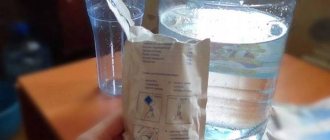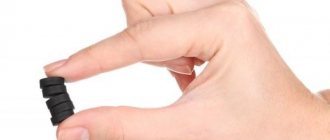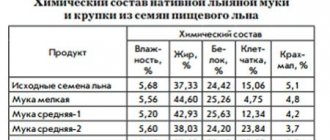Release form and composition
It is produced in the form of flat, round tablets with beveled edges.
The capsules have a brown tint with inclusions. Sold in blisters and cardboard packages. Senade tablets, which help normalize stool, contain a plant active element - an extract from senna leaves. In one capsule its share reaches 93.3 mg. Additional substances contribute to better absorption of the medication: methyl parahydroxybenzoate, lactose, sodium lauryl sulfate and carmellose, magnesium stearate, starch, talc, cellulose.
Dosage form - tablets: round, flat, with beveled edges, from brown to dark brown in color with inclusions, on one side there is an extruded word CIPLA, on the other there is a break line (in blisters of 20 pcs., in a cardboard pack of 2 or 3 blister, 25 blisters in a cardboard box).
Active substance: senna leaf extract, 1 tablet – 93.33 mg, including the sum of calcium salts of sennosides A and B (in terms of sennoside B) – 13.5 mg.
Auxiliary components: methyl parahydroxybenzoate, sodium lauryl sulfate, microcrystalline cellulose, starch, magnesium stearate, talc, lactose, sodium carmellose.
Pharmacological properties
Why are Senade tablets so popular among patients? This is an effective laxative with a natural base. The effect of the medicine begins 8 hours after use. The laxative properties are due to the effect of the drug on the receptors of the large intestine, which causes increased peristalsis.
Pharmacodynamics
Senade is characterized by a laxative effect, which manifests itself 8–10 hours after administration. It is caused by the effect of the drug on the receptors of the large intestine, leading to increased peristalsis.
Pharmacokinetics
The articles of the International Convention (EMEAHMPWG11/99) do not provide for a specialized study of pharmacokinetic parameters during clinical trials of medicinal products of phytoorigin.
Overdose
The medicine "Senade" instructions for use and doctors prohibit use for:
- constipation with cramps;
- unclear abdominal pain;
- intestinal obstruction;
- acute inflammation of the abdominal cavity;
- cystitis;
- hypersensitivity to the components of the drug "Senade", which may cause allergic reactions;
- peritonitis;
- bleeding from the stomach, uterus, intestines;
- strangulated hernia;
- pathologies of water electrolyte metabolism;
- children under 6 years old.
The tablets are taken orally 1 time per day before bedtime. It is necessary to take the medicine with a sufficient volume of liquid. There are 2 treatment regimens:
- Children over 12 years of age and adults are prescribed 1 tablet per day. If there is no result of therapy, the daily volume of the drug is increased to 2-3 pieces.
- Children 6-12 years old are given 0.5 tablets per day. It is possible to increase the dosage to 1-2 capsules.
When selecting the required amount of medicine, the dosage is increased gradually, increasing it by 0.5 tablets. If the result is not observed after 3 days, you need to consult a doctor.
According to the instructions, Senade is a drug for the treatment of constipation due to sluggish motility of the large intestine and hypotension.
The product is also used to regulate stool in case of anal fissures, proctitis and hemorrhoids.
Absolute:
- spastic constipation;
- abdominal pain of unknown origin;
- acute inflammatory diseases of the abdominal cavity;
- peritonitis;
- strangulated hernia;
- intestinal obstruction;
- disturbances of water and electrolyte metabolism;
- gastrointestinal and uterine bleeding;
- cystitis;
- children under 6 years of age;
- hypersensitivity to the components of the drug.
Relative:
- kidney and/or liver diseases;
- conditions after abdominal operations;
- pregnancy;
- breastfeeding period.
Senade tablets should be taken orally with water or a drink, usually once a day.
Recommended single doses:
- adults and adolescents over 12 years of age – 1 tablet, in some cases the dose may be increased to 2-3 tablets;
- children 6–12 years old – ½ tablet, if necessary, the dose can be increased to 1-2 tablets.
When selecting the optimal dosage over several days, the drug should be taken in one dose, gradually increasing it by ½ tablet. If, after reaching the maximum permissible daily dose, bowel movements do not occur within 3 days, you should consult a doctor.
The most important clinical symptom of Senade overdose is diarrhea, which causes dehydration. In this case, it is recommended to resort to conservative measures - increasing fluid intake, which usually allows you to completely compensate for the loss of fluid and electrolytes. Sometimes the deficiency of fluid and electrolytes is replenished through intravenous infusions of plasma replacement fluids.
The annotation for the medicine states possible side effects when taking it. These include the following factors:
- colicky abdominal pain, flatulence;
- disturbance of water-electrolyte metabolism;
- albuminuria, hematuria, melanin deposition in the intestinal mucosa;
- nausea, vomiting, diarrhea, discoloration of urine;
- skin rash, convulsions, vascular collapse;
- increased fatigue, confusion.
An unfavorable symptom of an overdose is diarrhea, which is dangerous because it leads to dehydration. To eliminate its signs, you need to take conservative measures - increase your water intake to compensate for fluid loss and lack of electrolytes. Sometimes doctors resort to emergency measures when electrolytes are lost - intravenous infusions of plasma substitutes are administered.
https://www.youtube.com/watch?v=1u0r0yMiQa4
The instructions indicate the presence of contraindications for which it is prohibited to use the medication for its intended purpose:
- hypersensitivity to components;
- spastic constipation;
- intestinal obstruction;
- abdominal pain of unknown origin;
- strangulated hernia;
- acute inflammation in the abdominal cavity, peritonitis;
- gastrointestinal or uterine bleeding;
- cystitis;
- problems with water and electrolyte metabolism;
- with caution in diseases of the liver, kidneys, pregnancy, lactation, after abdominal surgery, up to 6 years.
Bulk laxatives
It is also difficult for the body to get used to them. Doctors prescribe such medications for those who have mild constipation, but the problem has already become chronic. Medicines contain plant components that can increase in size by absorbing liquid. You can safely drink them in courses, but doctors always advise taking more water at the start of the course to avoid dehydration. Such fillers contain flax seeds or wheat bran, and other similar plant fibers. The side effect is mild if you take them strictly according to the recommendations of a specialist and do not forget about water.
The reasons for the loss of effectiveness of laxatives are now becoming clear. Some have an addictive effect, after which the body stops responding and more of the drug is needed, others act more slowly and require special control over use, and still others may simply not be suitable.
What remains? Medical assistance. If you are experiencing acute constipation, relieving it with any irritating laxative is quite easy. But when a patient suffers from a chronic bowel problem, it is best to go to the doctor. Get examined and possibly get tested. There is no medicine that is quick, like an irritating laxative, and harmless, like a probiotic, that can permanently relieve unpleasant constipation.
The doctor is able to assess the problem individually, study tests and, first of all, determine the true cause of chronic constipation. Then prescribe treatment. It is possible that a serious disease is developing within the patient that is affecting the bowel movement process.
Drug interactions
Most often, patients complain of flatulence and colicky abdominal pain.
With long-term use of Senade, especially in high doses, the following side effects are possible:
- dermatological reactions: skin rashes;
- from the digestive system: nausea, diarrhea, vomiting, melanin deposition in the intestinal mucosa;
- from the urinary system: the appearance of blood and/or protein in the urine, discoloration of urine;
- from the cardiovascular system: vascular collapse;
- from the central nervous system: confusion, fatigue, convulsions;
- on the metabolic side: disturbances of water and electrolyte metabolism.
In case of simultaneous use of licorice root preparations, glucocorticosteroids or thiazide diuretics, the risk of developing hypokalemia increases.
When taken long-term in high doses, Senade can enhance the effect of cardiac glycosides and also affect the effect of antiarrhythmic drugs.
Instructions for use of Senade warn that long-term use in high doses can enhance the effect of cardiac glycosides and affect the effect of antiarrhythmic drugs, increasing the risk of developing hypokalemia. The latter can occur if the medication is combined with thiazide diuretics, glucocorticoids, and drugs based on licorice root.
When taken together with glucocorticosteroids, diuretics, drugs including licorice root, there is a possibility of hypoeplyemia. The medication increases the effect of cardiac glycosides. It is not advisable to take tablets for longer than 2 weeks. During therapy, the medication may color the urine.
Indications
Meccan senna is used for constipation. It is especially effective for atonic peristalsis disorders (constipation accompanied by a decrease in the level of intestinal motility).
Cassia preparations prevent the occurrence of recurrent stool retention. They effectively alleviate the condition during exacerbation of hemorrhoids, paraproctitis and other anorectal diseases.
Senna leaves are used to cleanse the intestines. In addition, their use helps restore the functioning of other organs of the gastrointestinal tract.
Side effects
The medicine "Senade", the instructions and patient reviews confirm this, and is well tolerated. Side effects include symptoms of flatulence and abdominal cramps. When taking large volumes of the drug over a long period, the following is observed:
- skin rash;
- nausea;
- diarrhea;
- confusion;
- blood or protein in the urine;
- vomiting;
- vascular collapse;
- fatigue;
- disturbances of water electrolytic metabolism;
- convulsions.
Children, during pregnancy and lactation
Doctors prescribe Senade with caution during pregnancy and lactation. This is due to the effect of the tablets on the peristalsis of the large intestine. Active substances stimulate active contractions and accelerate the movement of feces to the anus. Their long stay in the intestines makes the feces hard and dry, which leads to pain and difficulty in passing stool through the anal sphincter. To move the mass out, the intestines contract, which can cause cramping pain.
They are unpleasant and dangerous during pregnancy, cause severe abdominal pain, provoke muscle contractions of the abdominal wall - reminiscent of pushing. This can result in premature birth or early miscarriage. An additional threat of the drug during pregnancy is the effect of increasing the tone of the smooth muscles of the uterus.
Senade's instructions allow the use of the medication by children over six years of age (3-6 years in exceptional cases). The dosage for them will be half a tablet per day, if necessary it can be increased to 1-2 pieces. Children over 12 years of age are prescribed an adult dose - one tablet once a day; if there is no effect, it is allowed to increase it to 2-3 tablets. Indications for use of the medicine in childhood are constipation.
In case of long-term absence of bowel movements, give the baby the whole tablet at once; in case of short-term absence, give the minimum dose. If the latter does not work, wait a day, repeat the dose, if after 24 hours there is no bowel movement, give the whole tablet. If after taking the maximum dosage the child does not go to the toilet within 24 hours, visit the doctor to adjust the medication.
Senade Tablets are not prescribed to children under 6 years of age. During pregnancy and breastfeeding, the medicine is taken with caution.
special instructions
According to the instructions for use, it is not recommended to take the medication to enhance intestinal motility for more than two weeks. It is considered normal if, while taking the drug, the urine turns yellow-brown or red-lilac. Dose adjustments occur under the supervision of a physician; self-prescription is not recommended due to the high risk of side effects. Some people use the drug for weight loss, but this does not lead to the desired effect.
Senade tablets should not be taken for more than 2 weeks in a row.
During treatment, urine may turn red-lilac or yellow-brown.
Taking the drug in old age
In this age group, the likelihood of constipation increases. Elderly people are at risk. Causes:
- Violation of metabolic processes.
- Taking medications.
- Sedentary lifestyle.
- Eating foods low in fiber.
- High consumption of protein foods.
- Impaired intestinal motility.
- Rectal distension. It loses its former elasticity.
The solution to these problems is trusted to the medicine Senada. You are allowed to drink 1-3 tablets every day. Take daily before bedtime.
In order to avoid an overdose, it is advisable to discuss the timing of administration with your doctor.
It is not recommended to use the medicine for more than 3 weeks. During this period, intestinal function should be restored, and bowel movements should occur without taking medications.
If this does not happen, then you need to consult a doctor. Perhaps the drug is not suitable and should be replaced or the dosage needs to be reconsidered.
Opinions of patients and doctors
Patients give the following reviews about the drug "Senade". They talk about the mildness of the action of the product, while noting that if the volume is exceeded, the body quickly becomes dehydrated and the stomach begins to hurt badly. Doctors note the difficulty in selecting the dosage; determining how many tablets to take can only be done experimentally, gradually increasing their number.
Many people ask: how long does it take for Senade to work? The instructions indicate that the medicine helps after 8-10 hours. Some reviews provide information about the appearance of a positive effect after 2-3 hours. In reality, it is quite difficult to determine how long it takes for a product to work. During therapy, it is recommended to stay at home to avoid problematic situations.
Doctors say that the negative aspect of using the medication is that the body gets used to it. Their reviews indicate that within 3 months from the start of use, intestinal functioning deteriorates without medication.
There are reviews of women who used Senade tablets for weight loss. They took the drug 30 minutes before meals. However, doctors do not recommend doing this, in order to avoid addiction, the tablets should not be taken for more than 2 weeks.
Instructions for use
The drug is prescribed for use by people suffering from constipation and obesity. The medicine should not be taken too often, as in the future it may disrupt the regulation of the urge to bowel movement. While taking this medication, you must follow a diet: eat lean fish and meat, vegetables and fruits, light soups, drink plenty of fluids.
Properties of the drug
Senade tablets will help get rid of the cause of excess weight – waste and toxins. The medicine is recommended to be taken in the first stages of a weight loss program. Senade normalizes the peristaltic function of the intestines, relieves constipation and cleanses the body, does not disrupt intestinal function, and interferes with the absorption of fats and carbohydrate compounds, the main opponents in the fight against excess weight.
Senna leaves have adsorbent properties. Once in the intestines, the plant juice included in the drug irritates the lining of the stomach.
The stomach muscles begin to move intensely and contract. Because of this, waste and toxins are released from the body along with feces. A large amount of fluid is lost, extra pounds are lost. Subcutaneous fat tissue does not disappear anywhere, and the drug Senade cannot be called an effective means for getting rid of excess weight. The drug does not burn fat deposits; weight loss occurs by cleansing the intestines of feces. As a result, 5-8 kilograms of excess weight are lost in 10 days.
Reviews about Senada
Reviews of Senada say that the drug has a mild effect, but taking it in too high doses can cause severe abdominal pain and rapid dehydration. Therefore, the dose should be selected individually and only by a specialist, with caution and strictly according to indications.
Patients' opinions about how long it takes for Senade to take effect often differ. Some claim that the laxative effect is observed only after 8–10 hours, while others have experienced it within a few hours. Therefore, experts recommend refraining from visiting public places or urgent work until the drug begins to take effect, since it is almost impossible to predict it.
Sometimes the drug is used for weight loss purposes, taking it 30 minutes before each meal. However, due to the developing tolerance to Senada, it should not be used for weight loss for longer than 2 weeks.
Attention! The information presented in the article is for informational purposes only. The materials in the article do not encourage self-treatment. Only a qualified doctor can make a diagnosis and give treatment recommendations based on the individual characteristics of a particular patient.
Recipes with herbs
Traditional medicine knows how to drink senna in such a way as to get maximum benefit. There are many recipes for preparing healing mixtures from senna. If you add medicinal fruits and plants to the herb, this will significantly enhance the laxative effect.
It has been noticed that when consuming a mixture of dried fruits and senna, the intestines are cleansed of toxins and quite effective weight loss occurs. This recipe is as follows:
Thoroughly mix half a kilogram of chopped dried apricots and prunes, add 2 pharmaceutical packages of herbs to the mixture. The resulting mass is combined with two glasses of fresh honey. It is stored in the refrigerator. Take a tablespoon daily after your last meal.
Here are a few more similar recipes:
- Take equal amounts of senna leaf, buckthorn berries, anise, and licorice root extract. Then 2 tablespoons of the mixture are poured with two glasses of hot water, boiled for several minutes, and left to infuse. After filtering, take tea from the medicinal mixture, starting with 1 teaspoon, after each meal. Gradually increase the dose to 3 teaspoons. The treatment lasts until bowel movements are restored (about 2 months).
- Pour a tablespoon of raw Senna leaves into 3 cups of filtered water and heat over low heat until boiling. Add 100 g of chopped and thoroughly washed prunes. After boiling, remove from heat and leave for a while, then strain through cheesecloth. Take a decoction of senna and prunes half an hour before meals, four to five tablespoons.











